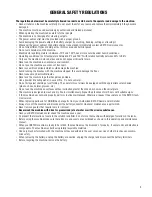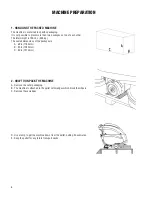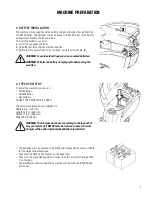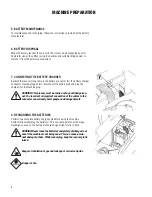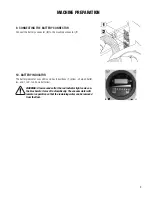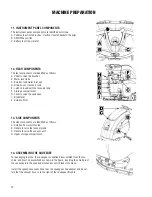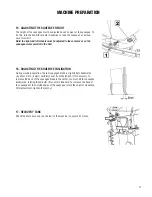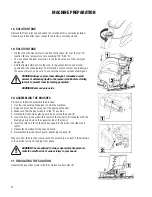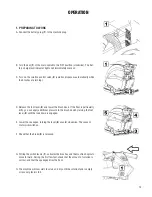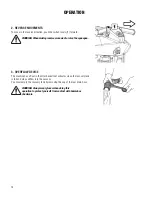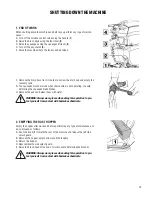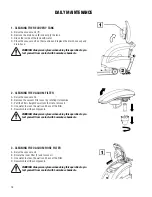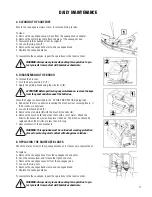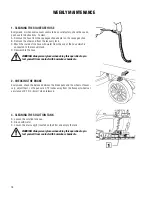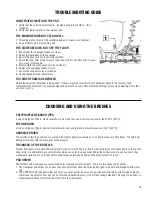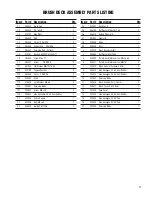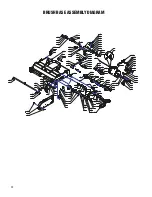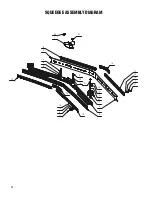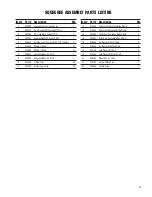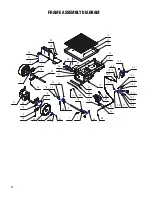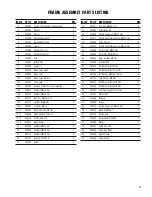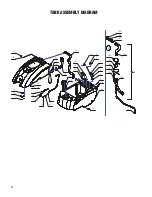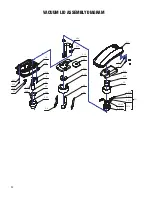
19
INSUFFICIENT WATER ON THE PAD
1. Verify that the solution control valve – located beneath the symbol – (
1
) is
turned on.
2. Verify that there is water in the solution tank.
THE MACHINE DOES NOT CLEAN WELL
1. Check the state of wear of the scrubbing pad and, if necessary, replace it.
2. Use a different kind of scrubbing pad.
THE SQUEEGEE DOES NOT DRY THE FLOOR
1. Ensure that the squeegee blades are clean.
2. Adjust the inclination of the squeegee.
3. Ensure the vacuum hose is correctly installed.
4. Check the inner filter of the recovery tank to ensure it is not dirty and, if neces-
sary, clean it thoroughly.
5. Disassemble the entire vacuum unit and clean it.
6. Replace the squeegee blades, if worn.
7. Ensure the vacuum motor is turned on.
8. Check squeegee wheel adjustment.
TOO MUCH FOAM IS GENERATED
Check that low-foam detergent is being used. If necessary add a small amount of defoamer liquid to the recovery tank.
Remember that more foam is generated when the floors are not very dirty. Dilute the detergent more when cleaning floors that
are not very dirty.
TROUBLESHOOTING GUIDE
POLYPROPYLENE BRUSH (PPL)
Used on all types of floors. Good resistance to wear and tear, and hot water (no greater than 140°F (60°C)).
NYLON BRUSH
Used on all types of floors. Excellent resistance to wear and tear and hot water (even over 140°F (60°C)).
ABRASIVE BRUSH
The bristles of this type of brush are coated with highly aggressive abrasives. It is used to clean very dirty floors. To avoid floor
damage work only with the brush pressure necessary.
THICKNESS OF THE BRISTLES
Thicker bristles are more rigid and are therefore used on smooth floors or floors with small joints. On uneven floors or those with
deep joints, it is advisable to use softer bristles which can enter the gaps easier. When the bristles are worn and too short, they
will become rigid and are no longer able to penetrate and clean deep down and the brushes tends to jump.
PAD DRIVER
Pad Holders and scrub pads are recommended for cleaning smooth surfaces. There are two types of pad holder:
1. The traditional pad holder has a series of anchor points that allow the abrasive floor pad to be held and dragged while work-
ing.
2. The CENTER LOCK type pad holder not only has anchor points, but also a snap-type central locking system made of plastic
that allows the abrasive floor pad to be centered and held without any risk of it becoming detached. This type of pad driver is
recommended above all for machines with more than one brush.
CHOOSING AND USING THE BRUSHES

